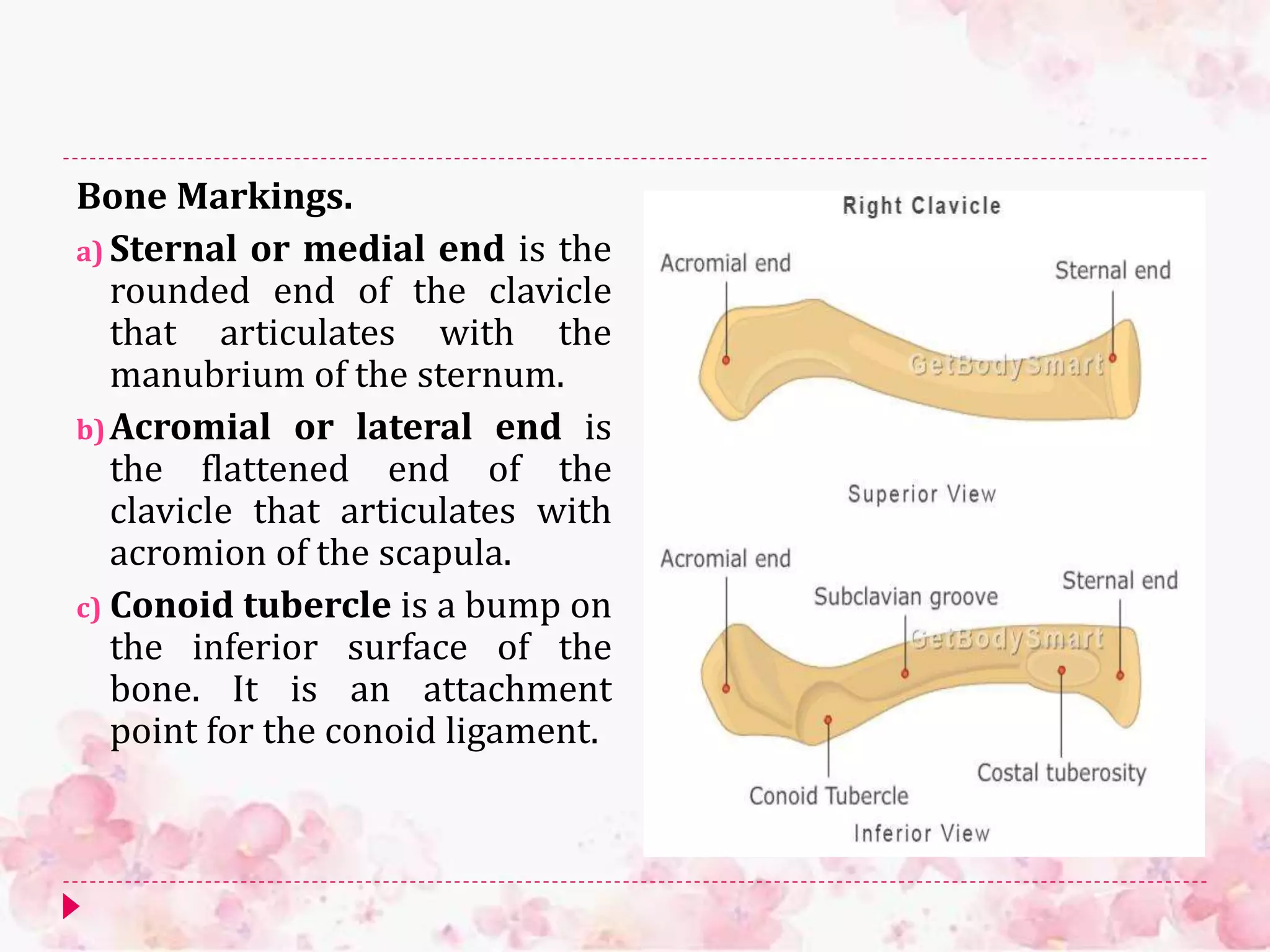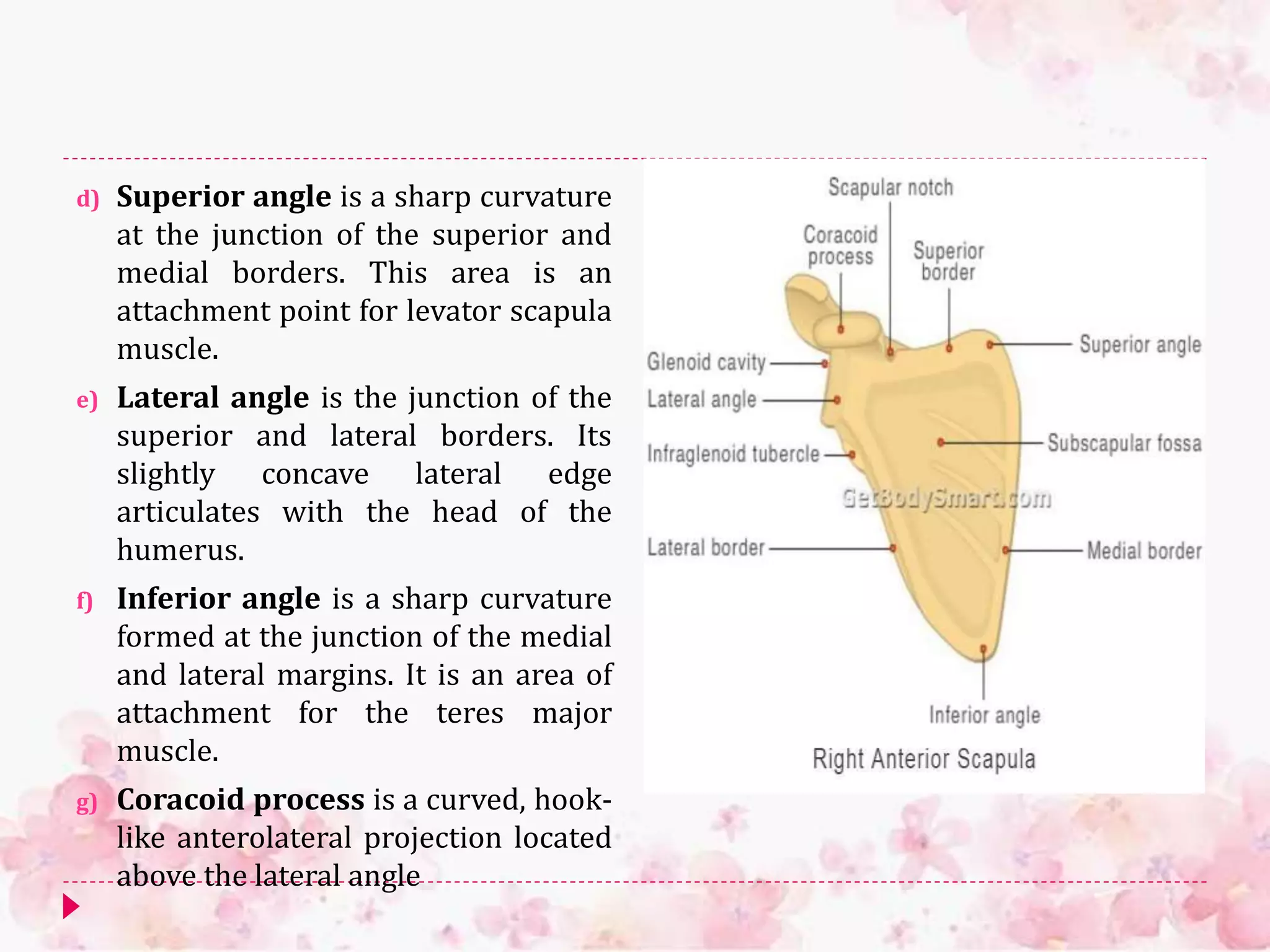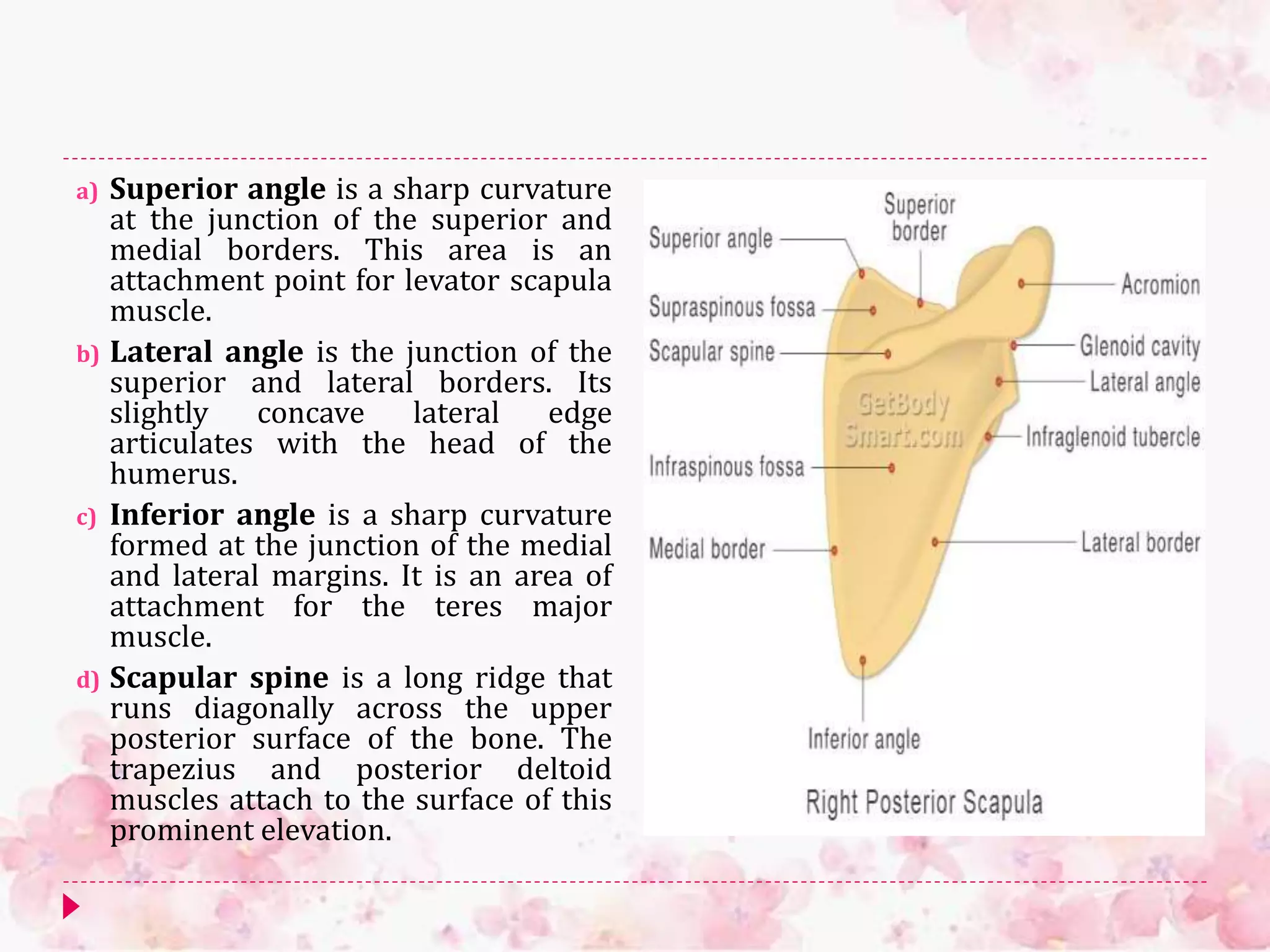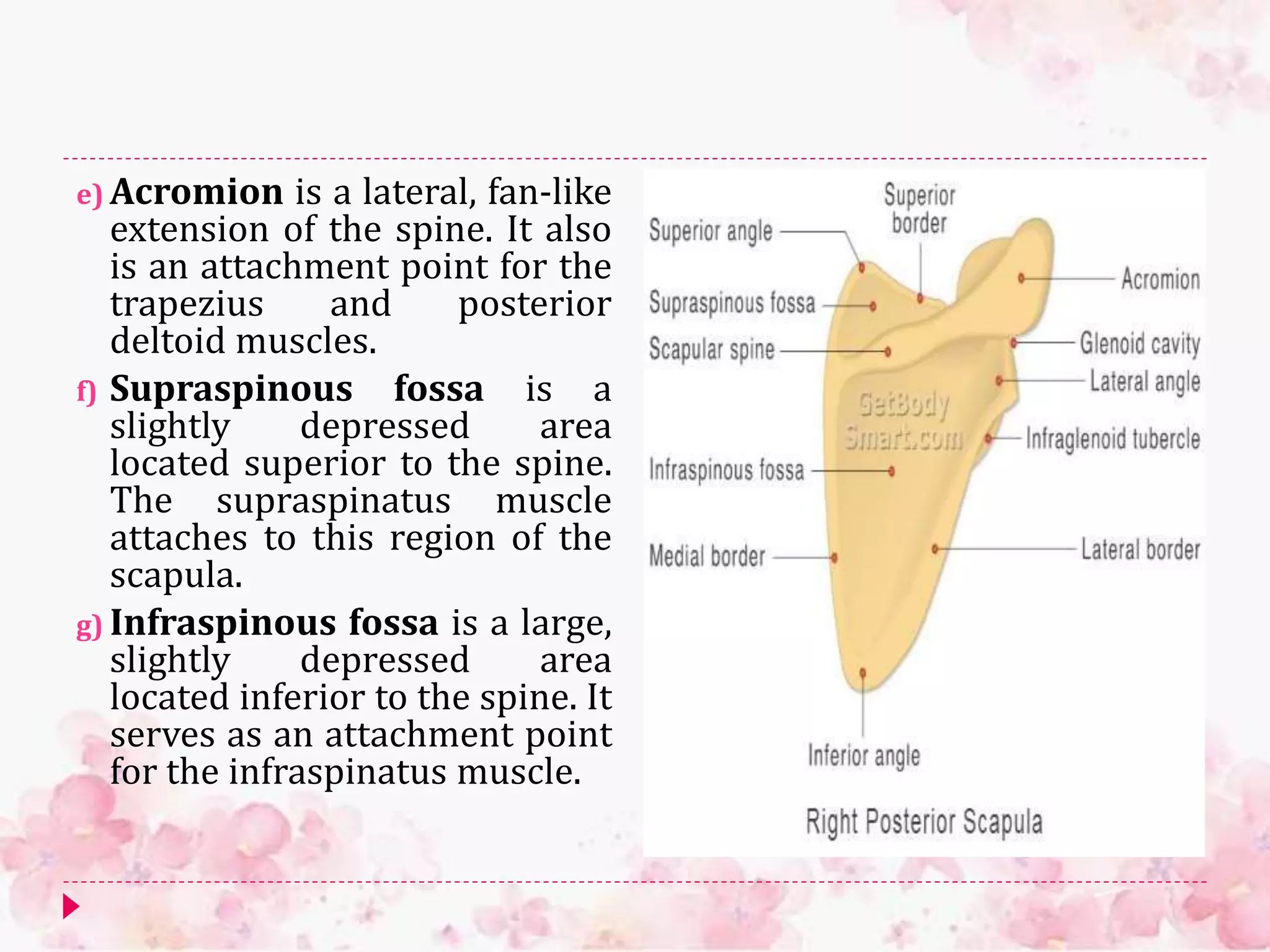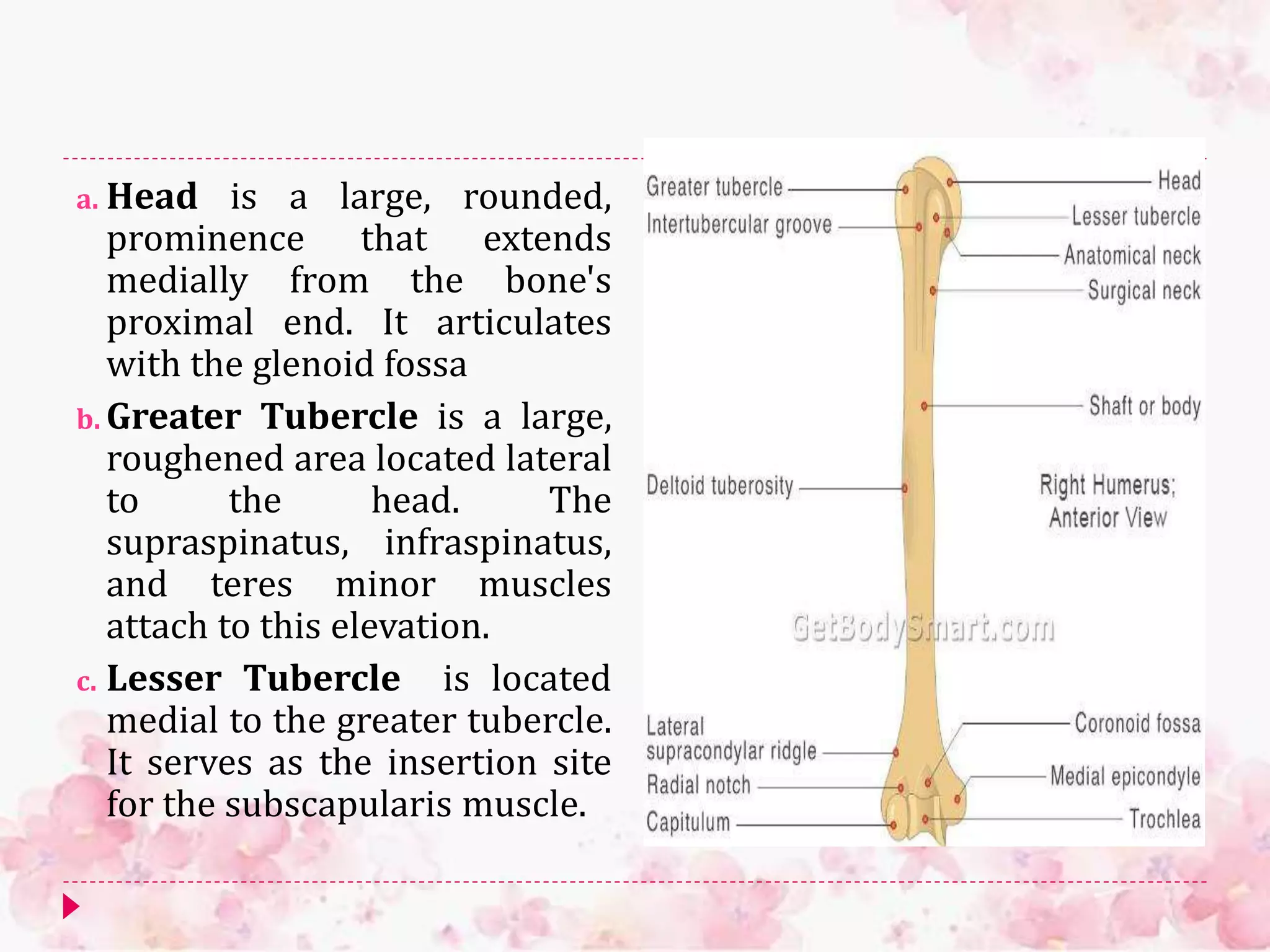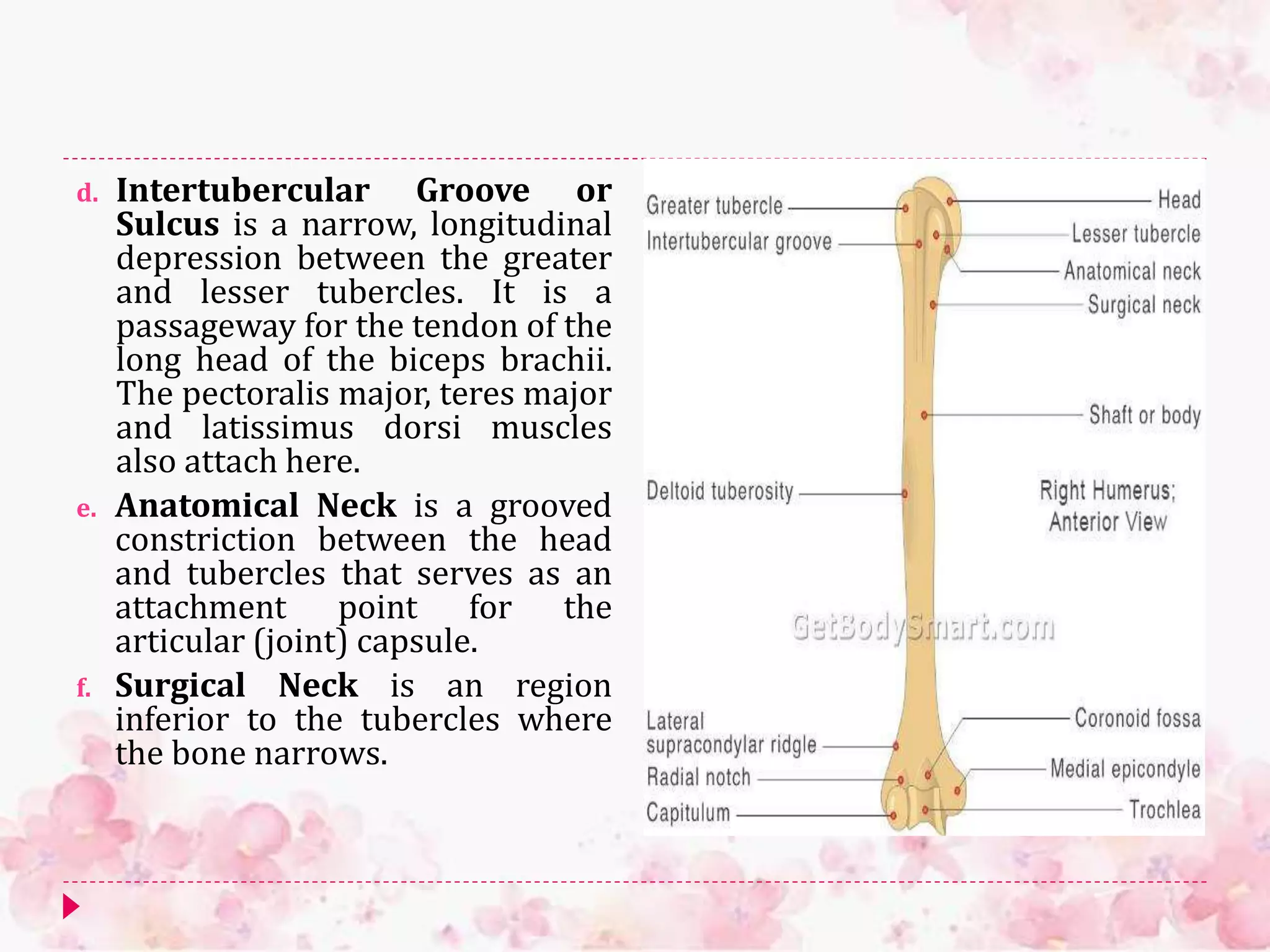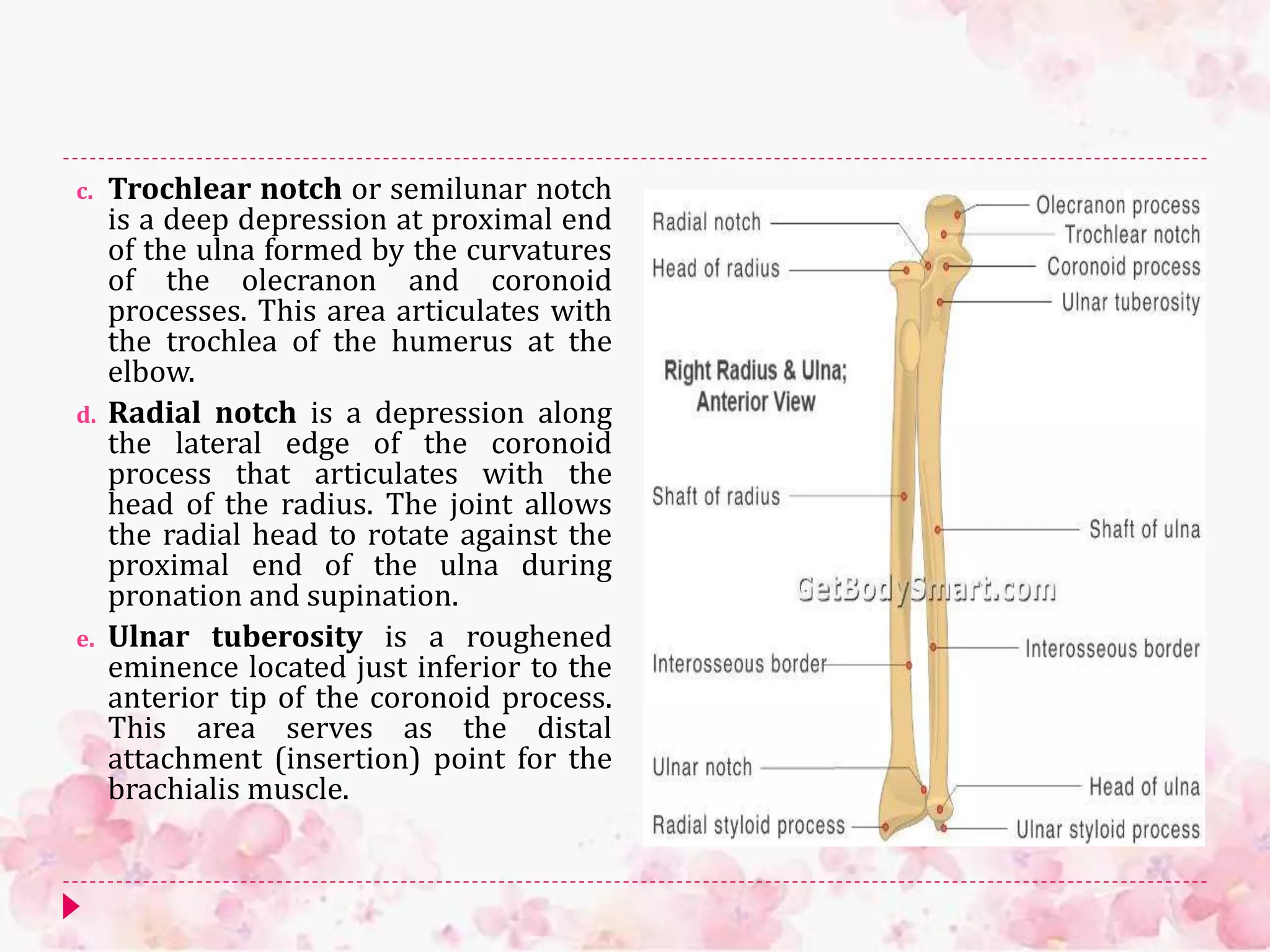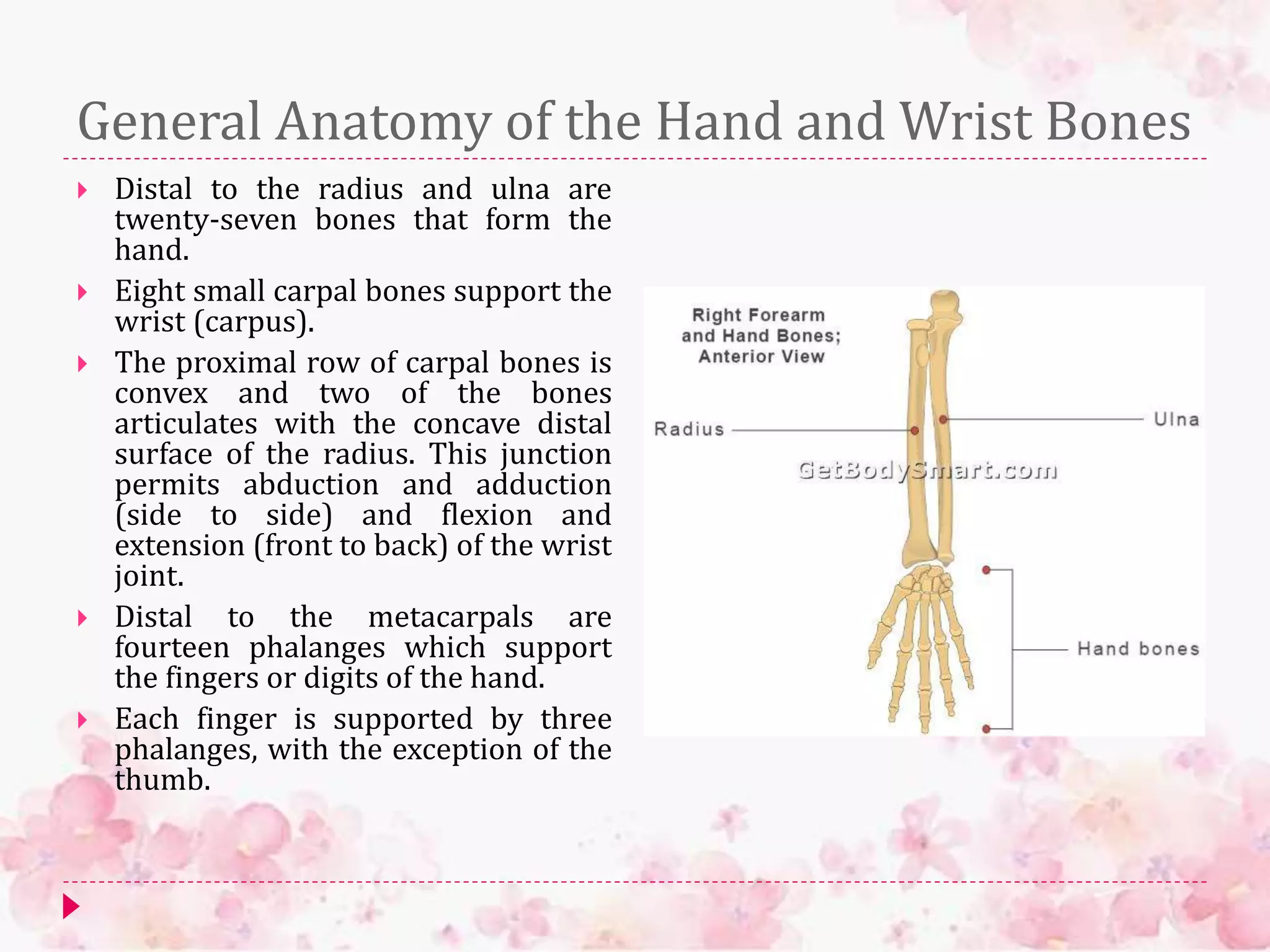The document summarizes the bones of the upper limb, including the clavicle, scapula, humerus, radius, and ulna. It describes the location and markings of each bone, as well as their articulations with other bones and attachments of muscles. Key points include that the clavicle and scapula form the shoulder girdle, connecting the humerus to the axial skeleton. The humerus extends from the shoulder to elbow joints. The radius and ulna articulate at the elbow and wrist, allowing rotation of the forearm.


